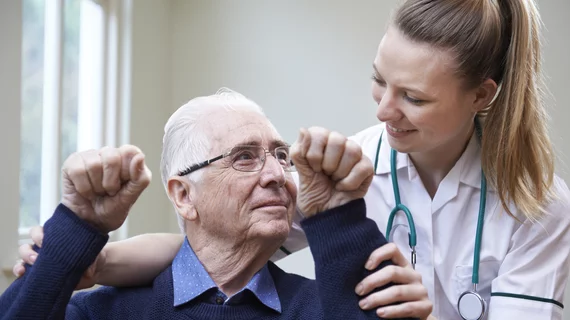Telerehab as effective as clinical therapy for restoring functionality after stroke
Home-based telerehabilitation is just as effective as traditional rehab for restoring arm function in stroke survivors, according to late-breaking science presented at this year’s American Stroke Association International Stroke Conference in Honolulu.
A randomized non-inferiority trial led by Steven C. Cramer, MD, MMSc, a professor at the University of California Irvine, and funded by the National Institutes of Health found telemedicine was helpful and equally as effective as inpatient care for stroke survivors, many of whom are older and have trouble traveling.
“Many patients receive suboptimal rehabilitation therapy doses after stroke due to limited access to therapists and difficulty with transportation,” Cramer said in a press release. “This can be addressed by telehealth, which enables patients access to high doses of rehabilitation therapy in their home.”
Cramer et al.’s study involved 124 stroke survivors recruited from 11 U.S. StrokeNet Clinical Trial Network sites. Patients, who on average were in their early 60s at the study’s baseline, were randomized to either in-hospital therapy using conventional methods or a home-based telerehabilitation program.
Cramer said the computer-based approach relied on “game-ified” therapy activities and exercises, engaging patients with activities like “Stroke Jeopardy” for a total of six weeks. In those cases, patients’ therapists were able to assess patient progress via videoconference.
The other half of the study pool spent their six weeks in traditional physical therapy, during which they performed standard activities without the use of a computer, Cramer said. Although the research team hasn’t released specific numbers yet, they said compliance to therapy was high and similar between both study groups, and arm function improved substantially and equivalently across the board.
“We demonstrated that home-based telehealth methods provide comparable benefits to traditional in-clinic methods,” Cramer said. “In the future, telehealth approaches to post-stroke rehabilitation might help patients reduce disability by accessing large doses of therapy.”

